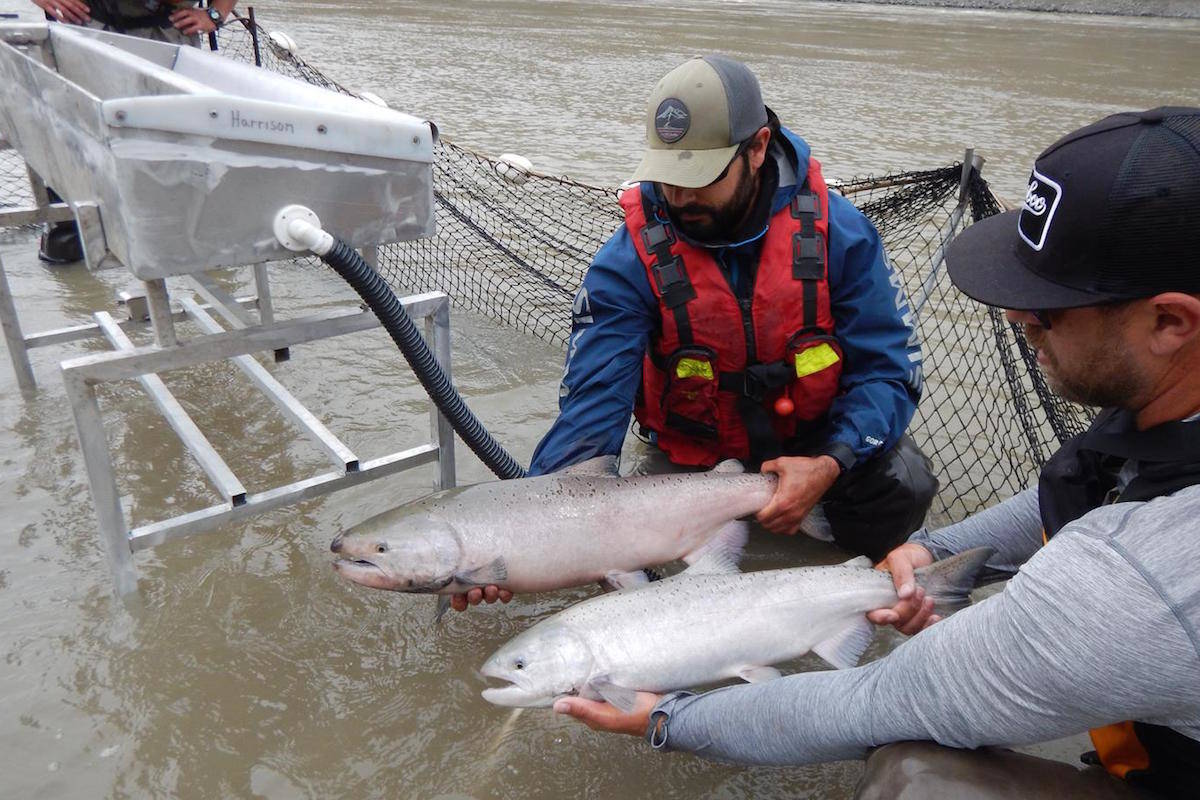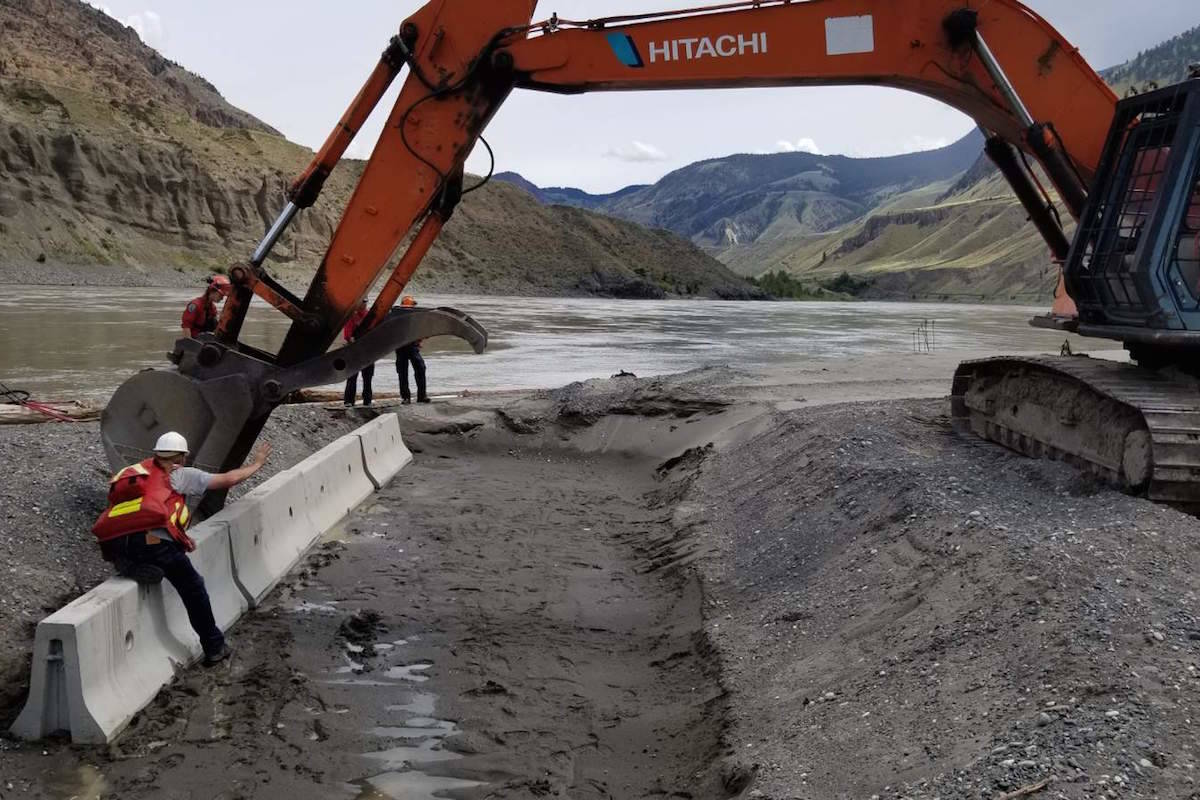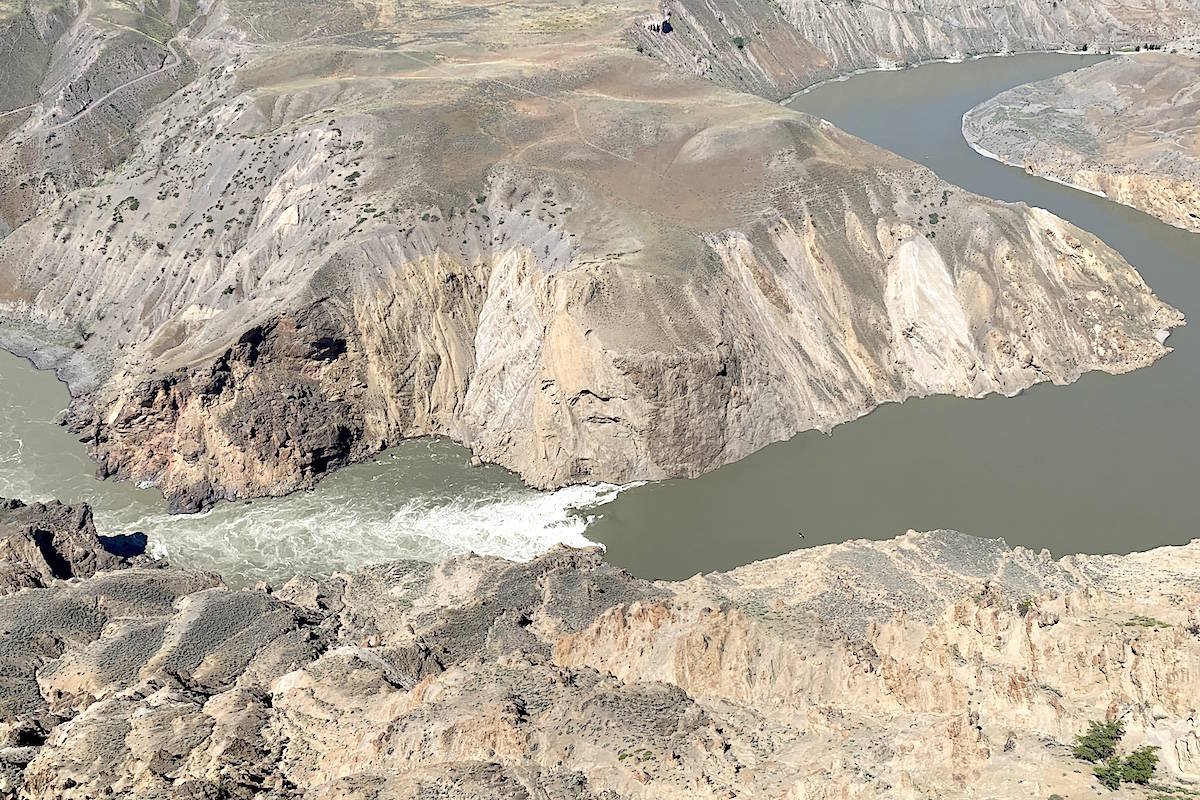There’s a multi-pronged plan in place to save as many trapped salmon as possible from a landslide site on the Fraser River near Big Bar.
After weeks of considering options, the latest effort is to transport the fish by helicopter over the slide obstruction.
Federal Fisheries and Oceans and provincial government experts have been working to hammer out solutions with a First Nations panel and the Canadian Coast Guard, all co-ordinated by an Incident Command Post management team based out of Lillooet, posting almost daily updates.
But the idea of physically moving the fish is just one of many ways they’re going at the problem.
“We’re not putting all our eggs in one basket,” Ken Malloway said. As co-chair of the Lower Fraser Fisheries Alliance, he’s been taking part in conference calls on the advisory panel, also representing the Fraser River Aboriginal Fisheries Secretariat. “The estimate of 80,000 fish to be flown over by helicopter may not seem like much when you consider a total of 3.7 million sockeye expected to return, but the idea is to help as many as possible to get by.”
They are also looking closely at a hatchery option that would see eggs extracted in an effort to bolster some runs.
READ MORE: Putting heads together on trapped fish
In terms of some runs of salmon and other fish, it couldn’t be happening at a worse time of year as they attempt to migrate back to their natal streams.
“At least we know the larger chinook are at least getting by, and we hope some of the Chilko sockeye, which are larger and stronger than others, can make it as well,” Malloway said.
Big boulders are being dropped from a high cliff to create calm pools for the fish they attempt to scale the mammoth waterfall churning at the site of the blockage.
READ MORE: FNs calling it ‘extreme crisis’
They don’t know how many fish are pooling behind the obstruction. It could be tens of thousand chinook and millions of sockeye ultimately, but coho salmon are also coming into the river system shortly.
The members of the Environmental Team are also beach seining and tagging fish above and below the site, to get a better idea of how many are getting past.
The swift-moving water is blocking most of the arriving fish from migrating any further upstream, but it has also been creating hazardous conditions for responding agencies at the remote site, which is not accessible by road.
They’ve been conducting controlled blasting in the area as rockscalers remove dangerous rocks on the face of the landslide to make it safer for workers.
Efforts are being focused on preparing for the helicopter transfer of fish, according to the incident command post release because thousands of chinook, and millions of sockeye could be impacted.
“An off-channel holding pond is being constructed to assist in the process of transferring fish to a safe area upstream of the slide location,” according to the ICP release.
“Once constructed, the fish will swim into the created channel, through a fish weir and into the holding pond dug into the sand bar.”
From there, the fish will be transferred with nets into aluminum tanks. The tanks will be attached to tether lines for the helicopters to take them beyond the slide.
“This operation is intended to safely transfer the salmon beyond the partial blockage as quickly as possible. The holding tank is equipped with an oxygen diffuser in order to reduce stress on the fish while in transport.”
Ongoing challenges includes the high canyon walls, churning water, the waterfall, the remote site, unstable water levels, heavy debris and silt.
READ MORE: Emergency size limits placed on marine chinook
Dean Werk, president of the Fraser Valley Salmon Society, said he and the FVSS members have been awaiting word on the next steps, after likening the situation to an “emergency.”
“We are very happy to see that a decision was made to benefit our migrating wild salmon in this critical time on their journey home to their rivers of origin,” said Werk. “It is great to see the federal government, provincial agencies, First Nations, commercial and recreational all collaborating in the process.”
More collaboration like this is needed when tackling tough challenges like this one.
“We are all very concerned about the future of wild salmon and we think this is another step in the right direction to ensure that there are fish for all sectors for many years to come,” Werk added.
What they believe happened last fall was that a slab of rock sheared off the cliff and slid into a steep and narrow section of the river, creating a five-metre waterfall and the massive barrier to fish passage.
Several types of fish are being impacted based on the “magnitude” of the obstruction, including some of conservation concern, officials said. The fish stocks include: spring/summer chinook, early Stuart sockeye, early summer sockeye, summer run sockeye and Fraser pinks.
@CHWKjourno
jfeinberg@theprogress.com
Like us on Facebook and follow us on Twitter.


